How the UK's biggest drugs bust was made
- Published
UK Border Force makes a year's worth of cocaine seizures in one day with 3.2 tonnes find.
Two Turkish men arrested on board a vessel in the North Sea in April 2015 have been found guilty of smuggling more than £500m of cocaine. This is how police and border officials tracked them down and found the drugs.

At 23:20 on 24 April last year, after 14 hours working in cramped spaces, a team of specialist officers found cocaine on the tip of a drill they were using to search a vessel in Aberdeen Harbour.
There was a tiny amount of the drug on the drill bit - but the discovery lead quickly to what's thought to be the biggest haul of cocaine ever seized in the UK.
So many bales of the class A drug had been hidden in the Hamal, it took the officers - members of UK Border Force's National Deep Rummage Team - three days to remove them all.
But it was actually the French custom investigations service, the Direction Nationale du Renseignement et des Enquetes Douaniere, that first tipped off its British counterpart a few days earlier.
On the evening of 20 April, French officers told the UK's National Crime Agency (NCA) that the Tanzanian-registered Hamal was somewhere off the west coast of the UK - and that they believed it was carrying drugs.
The hunt was on.
John McGowan, the head of the NCA's border policing team in Scotland, said boats and planes were used to search a huge area of the Atlantic and the North Sea.
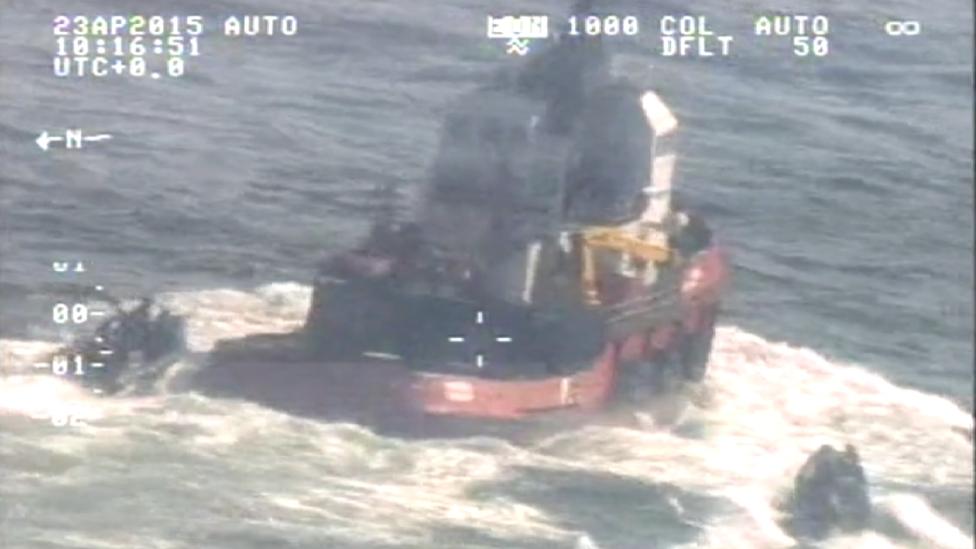
The Hamal (centre) was boarded when it was about 100 miles off the coast of Aberdeen

Officers from the Border Force and the NCA approached the Hamal using high-speed ribs
The customs cutter Valiant joined the operation, as did the frigate HMS Somerset, which broke away from a Joint Warrior Exercise off the coast of Scotland to help out.
Three days later, on Thursday 23 April, the Hamal was pinpointed in the North Sea, about 100 miles east of Aberdeen.
Because the Hamal was registered in Tanzania, the Tanzanian authorities were asked for permission before boarding. That permission was granted and at 11:00, two small, high-speed craft pulled alongside the ship, supported by HMS Somerset and HMC Valiant.
"The NCA and Border Force officers were deployed from both those vessels in ribs. They boarded the Hamal 100 miles out and effectively detained the ship and its crew," Mr McGowan said.
The ship was escorted into Aberdeen Harbour, arriving at about 02:00 on Friday, and the NCA officers took the crew to a police station. Aboard the Hamal, the National Deep Rummage Team began its painstaking work.
Officers started by pumping dry the ship's fuel, water and ballast tanks, before squeezing inside with breathing apparatus and head torches.
In one of the tanks they discovered a plate which appeared to have been recently welded, so they began to drill.
"During that search late on the Friday night, they drilled through a metal plate in one of those tanks. When they withdrew the drill they found traces of cocaine on the end of the drill bit," said Mr McGowan.
"At that point we knew that there were drugs on board."
But this was just the start.
It took most of Saturday to cut a hole big enough to see what was in the tank, which allowed the search team to spot a couple of bales of cocaine. Then, on the Sunday afternoon, they found fresh concrete on the floor of a cabin, hidden under a cabinet bolted to the floor.
The rummage officers broke through the cement and found silicon sealant around a hatch. When they ripped away the sealant and opened the hatch they saw bale after bale stacked up in the tank.
"It took them a further three days using breathing apparatus to bring them out, one bale at time, for forensic examination," Mr McGown said.
"It was a huge seizure. I mean 3.2 tonnes, a UK street price over half a billion pounds. That's sizeable in anyone's money.
"To give a comparison for people, the total seizure for cocaine by all the police forces in England and Wales and Border Force in the year 2014/15 was 3.4 tonnes.
"This was effectively a year's worth of seizures in a single activity."
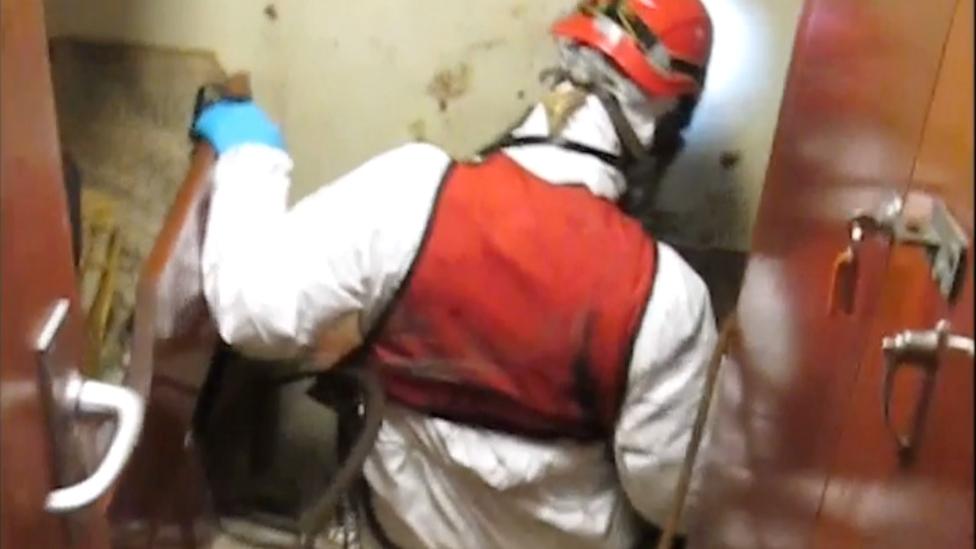
The cocaine was found by the UK's highly specialised National Deep Rummage Team
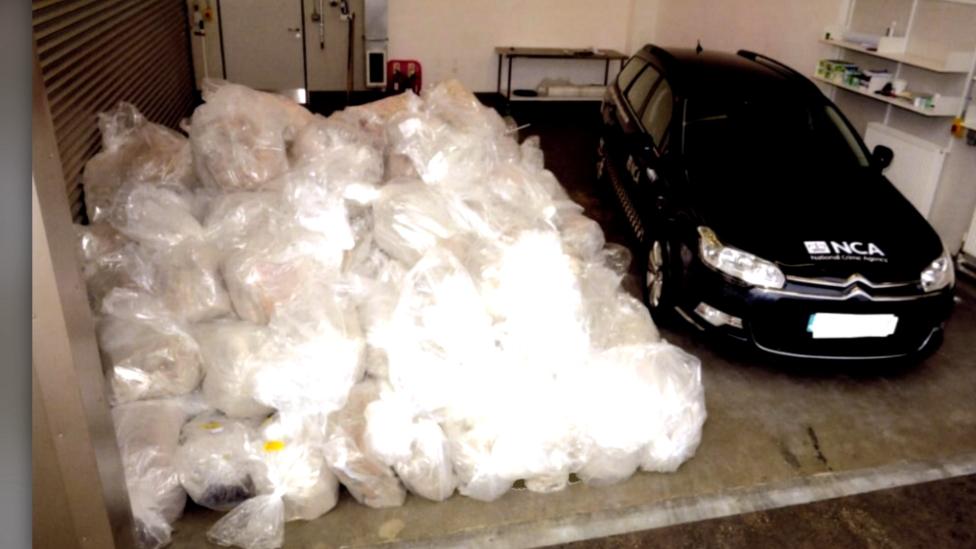
The drugs had an estimated street value of more than £500m
The NCA is not certain exactly where the drugs were loaded onto the Hamal. Mr McGowan said the agency examined navigation software on a laptop found on the vessel which suggested it happened at sea, about two days' sail from the coast of Guyana.
And investigators are not completely sure where the ship was headed - though after cracking a code they found on board they believe it was aiming for a meeting point "somewhere off the Dutch coast".
But what is "highly likely", said Mr McGowan, is that much of the cocaine would have eventually ended up here.
"The UK is one of the bigger consumer markets for cocaine in Europe," he told BBC Scotland.
"So it's most likely that a sizeable proportion of these drugs, having been landed in Holland, would have found their way into the UK and ultimately Scotland."
The NCA and the National Deep Rummage Team could be forgiven for resting on their laurels for a while. After all, it's not every day they bust a drugs shipment worth half a billion pounds.
But Mr McGowan said the search is now on for the "sizeable" operation behind the haul.
"We are clearly working with international partners using the evidence and intelligence we've gleaned from this case to piece together who may be behind this.
"What I can say to you is that work is ongoing across Europe."
- Published11 July 2016
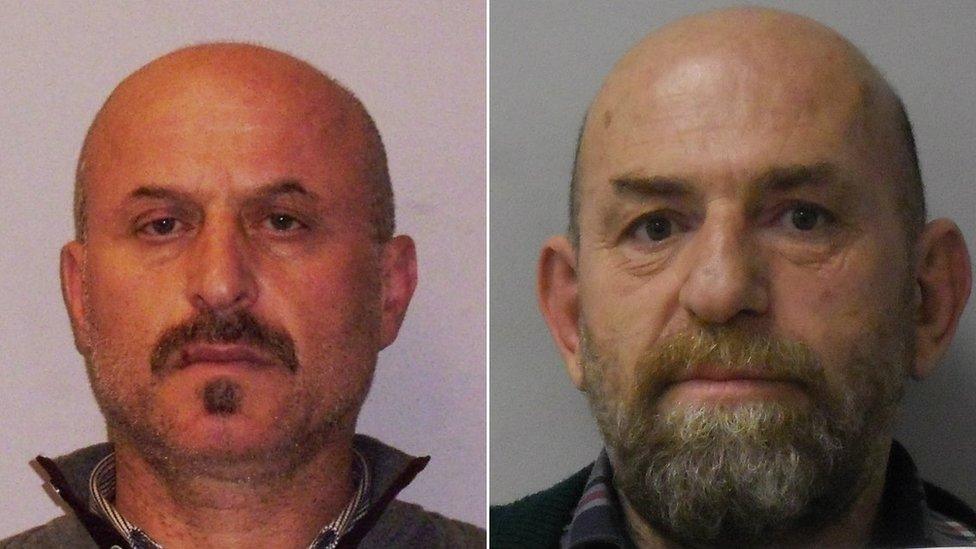
- Published13 June 2016

- Published28 April 2016

- Published27 April 2015
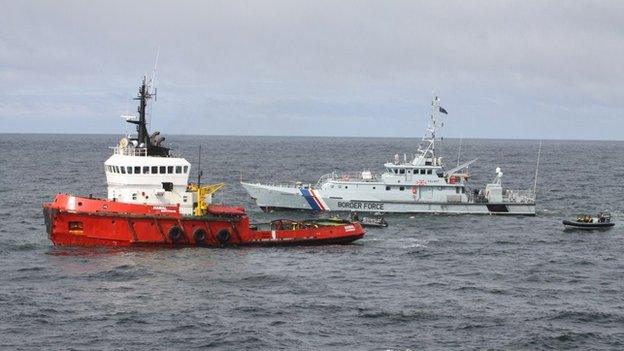
- Published25 April 2015

- Published30 April 2015
